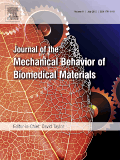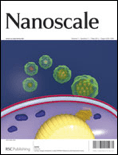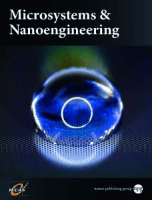
IEEE Open Journal of Nanotechnology
metrics 2024
Transforming Ideas into Innovations in Nanotechnology
Introduction
IEEE Open Journal of Nanotechnology is an innovative publication dedicated to advancing the field of nanotechnology, with a particular focus on its applications in areas such as computer science, electrical engineering, and materials science. As an esteemed publication of the IEEE (Institute of Electrical and Electronics Engineers), established since 2020, it follows a robust Open Access model, ensuring that high-quality research is accessible to a global audience without financial barriers. This journal is notable for its diverse scope and has rapidly gained recognition, achieving a commendable Q3 ranking across multiple categories, including Computer Science Applications and Materials Chemistry, according to the latest 2023 assessments. With a Scopus ranking that places it among the top journals in the engineering and materials science domains, the IEEE Open Journal of Nanotechnology is positioned as a critical resource for researchers, professionals, and students interested in the cutting-edge developments and methodologies in nanotechnology. The journal promotes interaction and collaboration among scholars and practitioners, making it a vital platform for sharing novel insights and innovations in this rapidly evolving field.
Metrics 2024
 -
- 1.80
1.80 2.00
2.00 -
-Metrics History
Rank 2024
IF (Web Of Science)
JCI (Web Of Science)
Quartile History
Similar Journals

Journal of Nano Research
Empowering Research in the Nano RealmThe Journal of Nano Research, published by Trans Tech Publications Ltd, is a distinguished academic journal dedicated to the rapidly evolving field of nanotechnology and materials science. With an ISSN of 1662-5250 and an E-ISSN of 1661-9897, the journal has been an important platform for researchers and professionals since its inception in 2008, continuing to provide high-quality peer-reviewed research through to 2024. Nestled in Switzerland, the Journal of Nano Research plays a pivotal role in disseminating cutting-edge findings, as recognized by its categorization in Q3 for Materials Science and Physics while being positioned in Q4 for Nanoscience and Nanotechnology as of 2023. With Scopus rankings highlighting its impact, including Rank #129 in general Physics and Astronomy and Rank #300 in Materials Science, this journal is crucial for academics seeking to stay ahead in research trends and innovations in nano-related disciplines. Although it operates under a subscription model, the journal's objectives include fostering collaboration and knowledge-sharing among researchers, making it an invaluable resource for anyone immersed in the world of nanotechnology.

Journal of the Mechanical Behavior of Biomedical Materials
Connecting Mechanics and Medicine for a Healthier FutureJournal of the Mechanical Behavior of Biomedical Materials is a leading academic publication dedicated to the intersection of mechanical engineering and biomedical innovation. Published by ELSEVIER in the Netherlands, this journal, which holds a solid presence within Q2 in Biomaterials and Biomedical Engineering, and Q1 in Mechanics of Materials as of 2023, features high-impact research with a measurable Scopus ranking that places it in the top tier of its fields. With an impressive percentile performance—82nd in Mechanics of Materials and 73rd in Biomedical Engineering—this journal serves as a vital resource for researchers, students, and professionals seeking to enrich their understanding of the mechanical behaviors of biomaterials and their applications. Spanning converged years from 2008 to 2024, it provides access to a wealth of pioneering research that advances the knowledge essential for the development of innovative biomedical applications. Engage with cutting-edge studies and broaden your expertise in the rapidly evolving realms of biomaterials and biomedical engineering through this authoritative publication.

Nanomedicine Journal
Catalyzing Collaborative Efforts in Nanomedicine.Nanomedicine Journal, published by Mashhad University of Medical Sciences, serves as a vital platform for research and developments in the dynamic field of nanotechnology applied to medicine. With an ISSN of 2322-3049 and an E-ISSN of 2322-5904, this Open Access journal, operational since 2013, makes cutting-edge research freely accessible to encourage collaborative efforts in this rapidly evolving domain. The journal navigates various areas, including bioengineering, biomedical engineering, materials science, and pharmacology, holding prestigious rankings in categories relevant to these fields. The 2023 Scopus Rankings reveal its significant standing within the scientific community, particularly with a 76th percentile in general medicine. By bridging the gap between laboratory technologies and clinical applications, the Nanomedicine Journal aims to empower researchers, professionals, and students alike to contribute to the innovative landscape of nanomedicine. With a convergence period extending from 2019 to 2024 and an established reputation, this journal is essential for those pursuing advancements in therapeutic solutions and diagnostics through nanotechnology.

Nanoscience and Technology-An International Journal
Exploring the Frontiers of Nanoscience and TechnologyNanoscience and Technology-An International Journal, published by BEGELL HOUSE INC, is a leading platform dedicated to the rapidly evolving fields of nanoscience and nanotechnology. With its ISSN 2572-4258 and E-ISSN 2572-4266, the journal serves as a crucial resource for researchers, professionals, and students alike, focusing on advanced materials, condensed matter physics, and mechanics of materials. It holds a commendable position in the scholarly community, evidenced by its Q2 ranking in 2023 across multiple categories including Condensed Matter Physics and Materials Science. The journal aims to disseminate high-quality research, promote interdisciplinary collaboration, and facilitate innovation within the nano realm. With its convergence period from 2019 to 2024, it continues to attract a diverse array of studies and insightful contributions, reinforcing its importance in shaping the future of nanotechnology and its applications.

Nanoscale
Transforming Innovations at the Nanoscale.Nanoscale is a premier academic journal published by the Royal Society of Chemistry, dedicated to advancing the field of nanoscience and nanotechnology. With both its ISSN (2040-3364) and E-ISSN (2040-3372) ensuring wide accessibility, the journal is renowned for its high-impact research contributions, reflected in its impressive 2023 Impact Factor and prestigious Q1 ranking in both Materials Science (Miscellaneous) and Nanoscience and Nanotechnology categories. Since its inception in 2009, Nanoscale has fostered a collaborative platform where leading researchers from around the globe share their innovative findings across a multitude of topics spanning from material synthesis to applications in nanotechnology. The journal not only serves as a valuable resource for professionals, researchers, and students but also actively engages the academic community in discussing emerging trends, thus shaping the future of nanoscience. Situated in the heart of the UK at Thomas Graham House, Science Park, Milton Rd, Cambridge CB4 0WF, Nanoscale remains a key publication for those looking to keep abreast of the latest breakthroughs in an ever-evolving field.

International Journal of Nano Dimension
Exploring the nano world for transformative solutions.The International Journal of Nano Dimension is a premier publication dedicated to advancing the field of nanotechnology and its applications across various disciplines, published by the Islamic Azad University, Tonekabon Branch. With an ISSN of 2008-8868 and an E-ISSN of 2228-5059, this journal serves as a vital platform for researchers, professionals, and students seeking to disseminate and access cutting-edge findings in nano materials and their integration into science and engineering. The journal has gained notable recognition in Scopus rankings, especially within the fields of Materials Science and Chemical Engineering, emphasizing its commitment to high-quality research. Spanning the years from 2019 to 2024, the journal emphasizes open access to foster knowledge sharing in the scientific community. As nanotechnology continues to revolutionize industries, the International Journal of Nano Dimension plays an essential role in showcasing transformative research that addresses the challenges and opportunities of this dynamic field.

FULLERENES NANOTUBES AND CARBON NANOSTRUCTURES
Connecting Researchers to the Cutting Edge of Carbon ScienceFULLERENES NANOTUBES AND CARBON NANOSTRUCTURES, published by Taylor & Francis Inc, stands at the forefront of research in the fields of nanotechnology, materials science, and organic chemistry. With an ISSN of 1536-383X and an E-ISSN of 1536-4046, this journal offers a critical platform for disseminating significant findings related to carbon-based nanostructures, materials characterization, and their innovative applications. Recognized for its scholarly impact, the journal enjoys a Q2 ranking in several fields, including Atomic and Molecular Physics, Materials Science, and Organic Chemistry, reflecting its commitment to quality research. Since its inception in 2002, it has maintained a rigorous publication standard and provides open access options, enabling a diverse audience, from researchers to industry professionals, to engage with the latest advancements. The journal's comprehensive scope across converged years until 2024 emphasizes its pivotal role in fostering knowledge in the rapidly evolving realm of nanoscience and nanotechnology. Researchers and practitioners alike are encouraged to explore the cutting-edge research showcased in this vital resource.

Microsystems & Nanoengineering
Unlocking the Potential of Microsystems and NanotechnologyMicrosystems & Nanoengineering, published by SpringerNature, stands at the forefront of advancing knowledge in the fields of atomic and molecular physics, condensed matter physics, electrical and electronic engineering, and materials science. With an impressive impact factor and categorized in Q1 across multiple prestigious fields in 2023, this journal not only provides a platform for high-quality research but also reflects the vitality of innovations within these disciplines. Since its transition to Open Access in 2015, it has significantly broadened accessibility for researchers, professionals, and students globally, facilitating the dissemination of groundbreaking findings. Addressed in the United Kingdom, with a focus on interdisciplinary collaboration, Microsystems & Nanoengineering aims to foster connections between theoretical advancements and practical applications, serving as a crucial resource for those engaged in cutting-edge nanoscale technologies and microsystems development. Immerse yourself in the latest studies and engage with the vibrant community that shapes the future of science and engineering.

ACS Nanoscience Au
Connecting Ideas in Nanoscience and MaterialsACS Nanoscience Au, published by the American Chemical Society, is a leading open-access journal dedicated to the rapidly evolving field of nanoscience. Since its inception in 2021, this journal has established itself within the top quartiles of academic publishing, ranking Q1 in both Chemistry and Materials Science for 2023. With a commitment to disseminating high-quality research, it provides a platform for innovative findings in nanomaterials, nanotechnology applications, and associated interdisciplinary studies. The journal is based in the United States and embraces an open-access model, ensuring that research is freely accessible to a global audience. This initiative not only enhances the visibility of authors' work but also facilitates collaboration across scientific domains. As a vital resource for researchers, professionals, and students alike, ACS Nanoscience Au plays a crucial role in advancing knowledge in the nanoscience community.

Nanobiotechnology Reports
Transforming ideas into impactful solutions.Nanobiotechnology Reports, an impactful journal published by PLEIADES PUBLISHING INC, serves as a prominent platform for disseminating cutting-edge research at the intersection of nanotechnology and biotechnology. With its ISSN 2635-1676 and E-ISSN 2635-1684, this open-access journal is committed to providing researchers, professionals, and students with accessible knowledge and innovations that drive advancements in this rapidly evolving field. Operating out of the United States, Nanobiotechnology Reports has established itself in various engineering and science categories, including Bioengineering and Biomedical Engineering, currently holding a Q4 quartile ranking in 2023. Although it is in the early stages of its publication journey since its convergence in 2021, the journal aims to foster collaboration and knowledge-sharing within the scientific community, addressing the complexities of nanomaterials and their applications in biological systems. Researchers and practitioners in nanobiotechnology are encouraged to contribute to this expanding body of knowledge, facilitating the development of innovative solutions that impact various sectors, from healthcare to electronics.